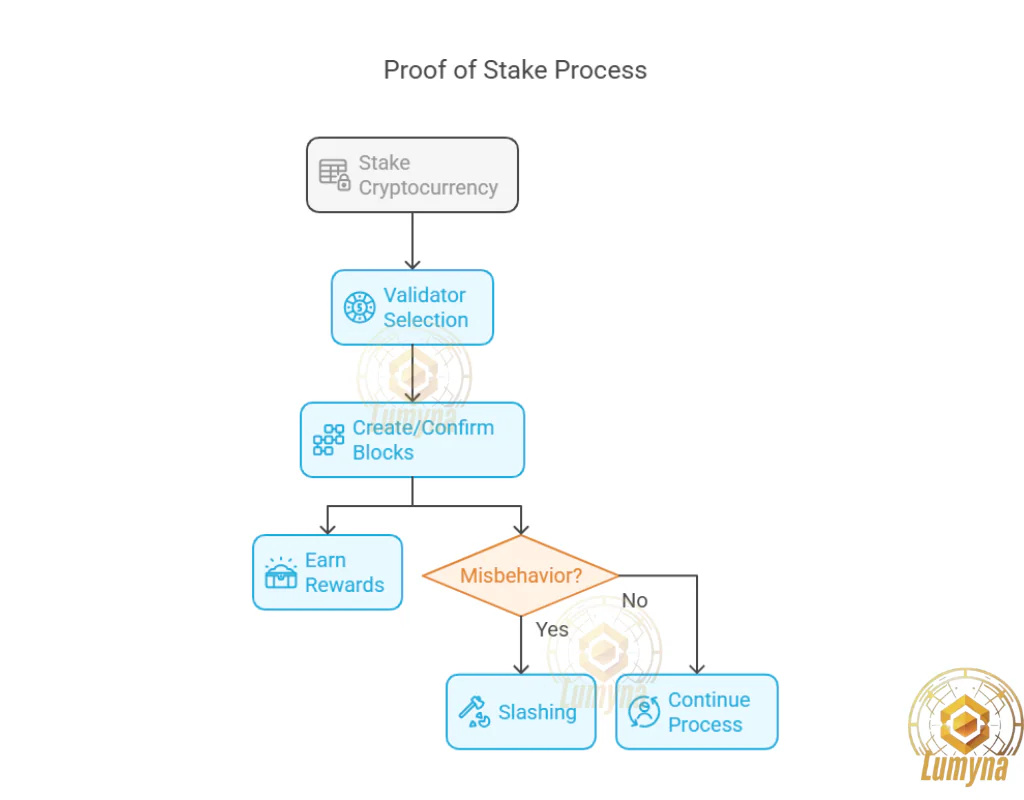
What is Proof of Stake?
Proof of Stake (PoS) is a consensus mechanism used in blockchain networks to validate transactions and secure the system without relying on energy-intensive computations. Unlike Proof of Work (PoW), which requires miners to solve complex puzzles, PoS selects validators based on the amount of cryptocurrency they “stake”, lock up as collateral. It’s a greener, more efficient alternative, widely adopted by networks like Ethereum (since 2022), Cardano, and Tezos.
Who created Proof of Stake?
PoS was first proposed by Sunny King and Scott Nadal in 2012 for Peercoin, aiming to address PoW’s high energy consumption. The idea built on earlier discussions in the crypto community about sustainable alternatives. Ethereum’s shift from PoW to PoS, led by Vitalik Buterin and the Ethereum Foundation, further popularized it, with the transition completed in September 2022 via “The Merge,” marking a pivotal moment for the mechanism.
When is Proof of Stake used?
PoS operates continuously in supported blockchains, validating transactions as they occur—often in seconds, depending on the network’s design (e.g., Ethereum’s 12-second block time). It gained traction in the 2010s as environmental concerns grew, with adoption accelerating in the 2020s as major platforms sought scalability and efficiency over PoW’s resource demands.
Where is POS applied?
PoS is used in public blockchains worldwide, running on nodes operated by individuals or entities who stake their crypto. It’s prominent in ecosystems like Ethereum (for DeFi and NFTs), Cardano (for smart contracts), and Binance Smart Chain, accessible globally to anyone with a wallet and internet connection.
Why use Proof of Stake?
PoS reduces energy use dramatically—by 99% compared to PoW, per Ethereum’s claims—making it eco-friendly. It lowers barriers to participation (no need for expensive hardware), enhances transaction speed, and maintains security through economic incentives: validators risk losing their stake if they act dishonestly. It aligns with the push for sustainable, scalable blockchain solutions.
How does PoS work?
In PoS, validators are chosen to create or confirm blocks based on their staked cryptocurrency and, often, additional factors like stake duration or randomization. For example, if you stake 100 ETH out of a network’s 1,000 ETH total, you have a 10% chance of being selected. Validators propose new blocks or attest to others’ blocks; if approved by the network, they earn rewards (e.g., transaction fees). Misbehavior—like proposing invalid blocks—triggers “slashing,” where part of their stake is confiscated, ensuring honesty. The process repeats, keeping the chain secure and synchronized.
Related Questions:
- Is PoS as secure as PoW? Yes, though differently—PoS relies on economic penalties rather than computational barriers, with robustness proven in networks like Ethereum.
- What’s an example of PoS? Ethereum’s post-2022 system, where stakers validate blocks instead of miners.
- Can PoS be attacked? Possible but costly, attackers need vast stakes (e.g., 51% of supply), and slashing deters malice.
- How does it differ from PoW? PoW uses energy-heavy mining; PoS uses staked assets, prioritizing efficiency over raw computational power.



